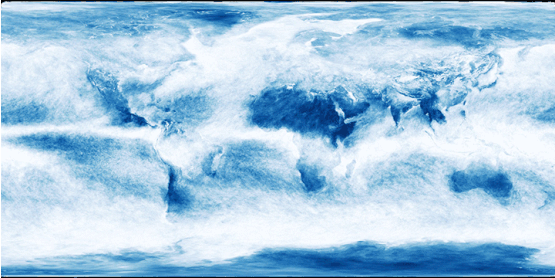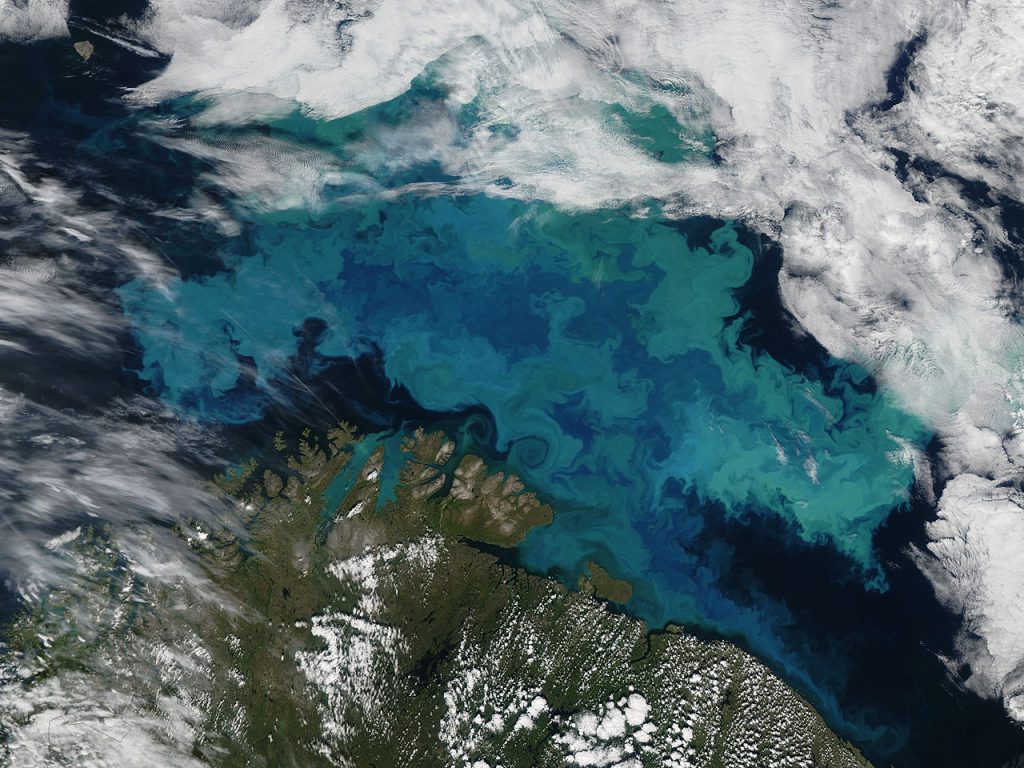Ocean aerobiology
In the first article concerning this branch of aerobiology we tried to define the composition of the oceanic aerobiota, talking about the microbial and eukaryotic communities that characterize the layers of air overlying the ocean. Continuing our journey to discover oceanic aerobiology, we will discover the ecological significance of marine aerosols and all the phenomena related to the transfer of microorganisms (in vital conditions and otherwise) into the atmosphere.
Environmental barriers
The biogeographical patterns of ocean microorganisms are determined by a myriad of factors and sometimes require complex models to be explored and well defined. For this reason, through the study of oceanic aerobiology, we try to define its structure. Two key factors in defining microbial distribution are ocean currents and winds. It is through the winds, which are fundamental in aerobiological processes, that the transfer of numerous microorganisms takes place. Among them, viruses linked to exopolymers make up a large percentage of the composition of primary aerosols. This type of transfer very often leads to the reduction of those environmental barriers that would normally be present among geographically distant populations.

Atmospheric residence: the times
There are few studies on ocean aerobiology that have investigated the deposition times and flows of microorganisms globally. The vastness of the area under analysis makes it difficult in itself to extrapolate precise estimates. According to a study by Mayol et al. (2014), microorganisms may be able to travel for days in the atmosphere, covering even substantial distances. According to the researchers, these distances could even correspond to a hypothetical journey across the entire Atlantic or Indian Ocean.

Considering the size of the microorganisms taken into consideration, it is possible to say that for unicellular eukaryotes we speak of residence times in the atmosphere of less than one day. On the other hand, for prokaryotes the situation is quite different. Given their small size, they are able to remain in the atmosphere even for years, covering considerable distances such as those examined previously. Among these we consider cyanobacteria, bacteria, Archaea. Without forgetting the viruses that can travel by exploiting the phenomena of marine aerosols.
Atmospheric residence: the fundamental factors
Atmospheric residence time is calculated primarily based on the gravitational forces associated with the masses. It is the basis of the study of oceanic aerobiology and is found to be fundamental for studying the phenomena involving the air masses. The other components considered are size, density, and shape. Besides the forces affecting biological particles, atmospheric properties are also taken into consideration. Among these we find:
- Wind speed;
- Direction;
- Rainfall.
These 3 factors can influence the distance traveled by our beloved microorganisms. Furthermore, even atmospheric structures such as clouds and fog can at the same time influence their dispersion in height in the atmosphere.

Atmospheric deposition: the mechanisms
Deposition of microorganisms can occur via two basic mechanisms. We are talking about wet deposition or dry deposition. Dry deposition is based on sedimentation under the influence of weather conditions such as wind, temperature, and relative humidity. Wet deposition is instead defined as one of the major mechanisms for removing microorganisms from the atmosphere. Here the discussion changes slightly since according to some researchers it is seen as a hypothetical mechanism for reducing the time of exposure to environmental stressors, potentially harmful to microorganisms.
Ecological influence or simple deposition?
However, to really talk about the ecological influence of these phenomena, it is first necessary to define when these organisms can play a fundamental role in changing ecosystem structures. Since we are talking about extreme environments, from the point of view of microorganisms, only those microorganisms capable of surviving the difficult conditions that are created between the atmosphere and ocean waters are considered to be effectively influential. During atmospheric dispersion, microorganisms face exposure to increasing UV radiation, drying and hydration processes, temperature changes, exposure to oxidants and free radicals, and changes in additional metabolic and physiological factors.

Aerosolization and environmental factors
In our first article we also defined primary and secondary aerosols. These are formed following aerosolization starting from different phenomena, therefore divided into primary and secondary. The survival of microorganisms depends precisely on factors that affect the latter. The most influencing factors are again the temperature, relative humidity, and in addition the salt concentration and the size of the drops. Salinity is a fundamental factor since in SSA (Sea Spray Aerosol) this changes rapidly and significantly, subjecting the microorganisms to great osmotic stress. This is because salinity can often be much higher or lower than the concentration of sea water.

Other important factors are changes in pH, especially the formation of acid aerosols, and exposure to UV radiation. However, some microorganisms are able to protect themselves from this latter factor through the production of particular secondary metabolites capable of protecting cells from genetic damage or thanks to the presence of a high guanine-cytosine content of the genome (% GC content).
Oceanic aerobiota: ecological influences and doubts
According to the researchers, who study ocean aerobiology, the two key points to be clarified regarding the influence of this microbial component are:
- Influence on the processing of oceanic DOM (Dissolved Organic Matter) in the atmosphere;
- Influence on aerosol-cloud interaction.
The atmosphere contains dissolved organic material, essential for supporting the microbial activity of the oceanic aerobiota. The question that everyone is asking is precisely: “what percentage of the oceanic aerobiota is metabolically active?”. Through the meta-transcriptomic analysis of samples collected in the clouds, various metabolic processes within active cells were indicated. This unfortunately was conducted in terrestrial and non-oceanic sites.

However, if for most microorganisms we are not able to establish whether they are actually able to influence ecosystem processes, for viruses the situation changes. We certainly know that viruses spread through the atmosphere can bring about important changes. A typical example is the virus that affects Emiliania huxleyi which plays a fundamental role in ending the flowering phenomena of this organism. This virus is in fact capable of being transported for hundreds of kilometers and remaining infectious.
Crops or non-crops?
One of the mountains, insurmountable for now, that opposes the clarification of these mechanisms concerns the possibility of cultivating the uncultivable, especially with regard to the oceanic aerobiota. Since we are unable to grow every type of microorganism on our planet, scholars have to rely on culture-independent methodologies. These include sequencing techniques that have made great strides in recent decades. On the one hand, the cultivation methods make it possible to indicate which organisms are able to survive, limited to those that can be cultivated.
On the other hand, the culture-independent techniques allow us to identify a wider range of microorganisms without giving us information on their survival. However, there is an innovative method capable of giving us, at least in part, a measure of both data, namely viability PCR (vPCR). This is based on the measurement of membrane permeabilities which is assumed to indicate the compromise of cell membranes and therefore, theoretically, allows us to evaluate the viability of the cell. However, the possibility of distinguishing between viable and non-viable cells remains much debated.
Conclusions
Ocene aerobiology is a dynamic science, in continuous development and still in its infancy. It is being developed through a multidisciplinary approach, integrating ocean microbiology, biogeochemistry, atmospheric science, climate science and biogeography. Starting from the basic example of the virus that affects Emiliania huxleyi, it is possible to understand how the study of this matter can increase our understanding of global biogeochemical cycles. Not to mention the potential that the airborne dispersion of microorganisms presents towards the diversification of distant microbial populations. Its deepening could explain many divergences, or simply the presence of similar species in different geographical areas. Furthermore, let us not forget the possibility of increasing our knowledge of the oceanic aerobiota, an element that is very often underestimated.
Original article “L’aerobiologia oceanica (parte 2)” written by Luigi Gallucci
Translation by
Sources
- Alsante, A.N., Thornton, D.C.O., Brooks, S.D., 2021. Ocean Aerobiology. Front. Microbiol. 12, 764178;
- Darwin, C., 1846. An account of the Fine Dust which often falls on Vessels in the Atlantic Ocean. Quarterly Journal of the Geological Society 2, 26–30;
- Jönsson, B.F., Watson, J.R., 2016. The timescales of global surface-ocean connectivity. Nat Commun 7, 11239.
Images’ credits
- Figure 1: https://upload.wikimedia.org/wikipedia/commons/thumb/7/7c/Oceano_Doce.jpg/2560px-Oceano_Doce.jpg;
- Figure 2: https://www.frontiersin.org/articles/10.3389/fmicb.2021.764178/full#B256;
- Image 3: http://assets.climatecentral.org/images/uploads/news/5_11_15_Brian_AquabyMonth.gif;
- Image 4: https://www.frontiersin.org/articles/10.3389/fmicb.2021.764178/full#B256;
- Figure 5: https://www.frontiersin.org/articles/10.3389/fmicb.2021.764178/full;
- Figure 6: https://earthobservatory.nasa.gov/images/51765/bloom-in-the-barents-sea.